Traveling in and out of today’s shiny and modernized airports can be a blur. Airports are busy, from those rushing to catch their flights or check in their luggage to those going through security checkpoints or waiting at the gates.
It’s almost impossible to pause for a moment and wonder how the early period of aviation was. Airports have advanced considerably since the 1900s. Grassy fields used to be the locations for the first airplane takeoffs and landings.
Due to the rise in air travel during World War I, landing fields were constructed to replace these grassy fields. It now required aircraft to approach from particular angles, prompting the development of aids for guiding the approach and landing slope.

While Bremen Airport was officially approved in 1913, it was taken for use during WWI and civilian operations halted until 1920.
©
Airport architecture improved after World War II. Runways are in clusters around the terminal, while passenger buildings are on an island. The downside was that travelers had to walk further to get to their flights.
The 1960s recorded the proliferation of jet aircraft and another significant advancement to the airports; runways were widened up to 3,000 meters (9,800 feet).
With automated baggage systems, self-check-ins, and numerous mobile apps dedicated to a better aviation experience, sophisticated airports attest to the creative genius and inventiveness of humans. However, the airports that paved the way for the industry are worth remembering.
Look at some of the oldest airports in the world and discover the stories behind these aviation landmarks.
1. College Park Airport, U.S.
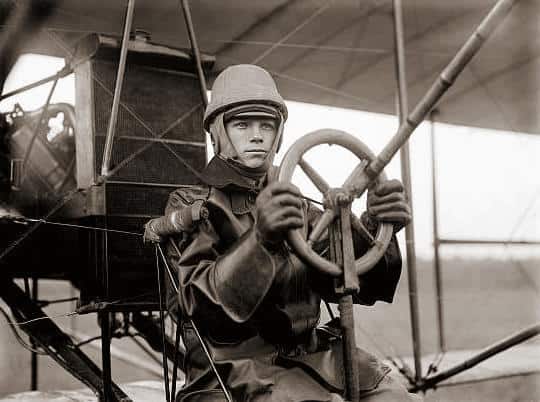
The building originally served as a training ground for the U.S. Army’s first military pilots.
©Harris & Ewing / Public domain, from Wikimedia Commons, the free media repository – License
College Park Airport (CGS), situated in Prince George’s County, city of College Park, Maryland, is a historic airport by every standard. It’s the world’s oldest continually operating airport.
The building originally served as a training ground for the U.S. Army’s first military pilots. The Army’s Chief Signal Officer formed an aeronautical division in his office on August 1st, 1907. Additionally, he contracted the Wright brothers to build a flying machine sent to Fort Myer, Virginia, in August 1908.
Flights were necessary as part of the contract to prove performance and train two military officers. Unfortunately, the first military aircraft in history, Signal Corps Airplane No. 1, flew around Fort Myers parade ground when it crashed, badly injuring Orville Wright. Thus, there is a delay in aircraft delivery and Army pilot training until 1909.
By then, the Signal Corps had constructed a small hangar for the aircraft and leased a field in College Park that Lt. Frank Lahm chose based on observations made during a balloon flight. Today, the Special Operations Division of Prince George County Police occupies the old hangar on the field.
Record Breaking and Advancement
Wilbur Wright started flight training for Lt. Lahm and 2nd Lt. Frederic E. Humphreys on October 8th, 1909. Lt. Benjamin Foulois joined them later that month. Wilbur completed 55 flights at College Park, one of which was his final record-breaking flight, traveling 46 mph over a 500-meter course.
There’s no shortage of aviation firsts at the public airport with its multiple record-breaking flights and notable aerial technological advancements. Humphreys made aviation history by being the first to fly solo in a government aircraft in 1909. On October 27th, 1909, Wilbur Wright piloted Mrs. Ralph Henry Van Deman, making her the first American female passenger to fly in a powered aircraft.
The Washington Aeroplane Company managed facilities within College Park from 1912 until 1917, where it also built the Columbia Biplane. On August 12th, 1918, the College Park field became a Washington destination for the first commercial airmail service by the U.S. Post Office.
In 1920, Emile and Henry Berliner, who built the first helicopter with maneuvering capabilities, arrived in College Park and started testing their invention.
CGS, also known as the cradle of aviation, was acquired by the Maryland-National Capitol Park and Planning Commission (M-NCPPC) in 1973. It was listed on the National Register of Historic Places in 1977.
2. Hamburg Airport, Germany
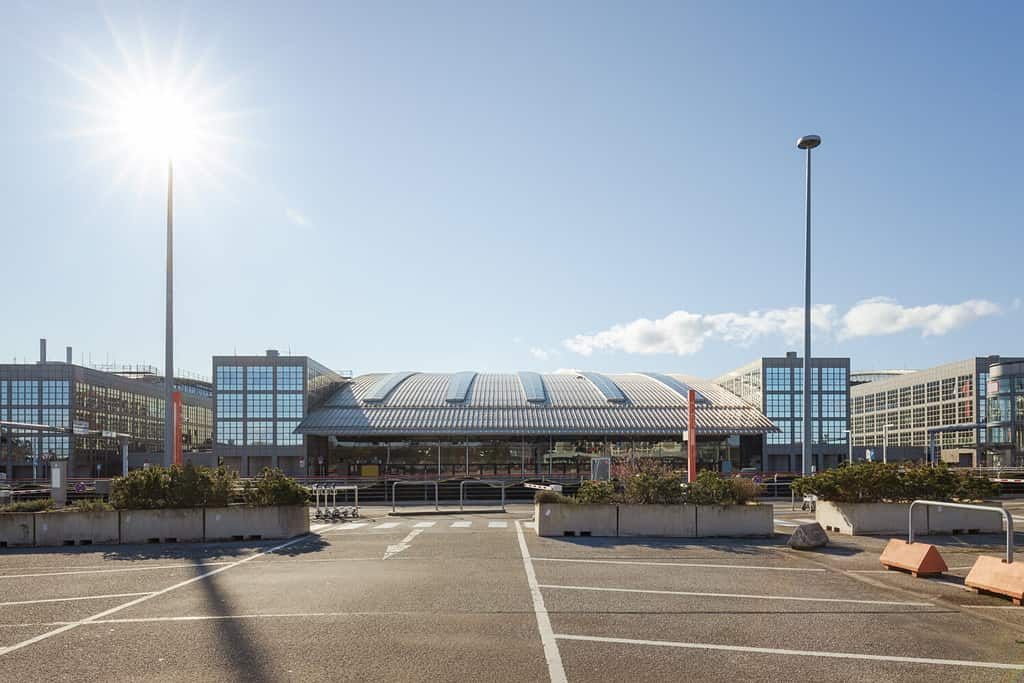
It is the second-oldest airport in Germany after Tempelhof Airport.
©carol.anne/Shutterstock.com
Established in January 1911, Hamburg Airport (HAM) is the world’s oldest commercial airport still in service. It is the second-oldest airport in Germany after Tempelhof Airport.
HAM, called Flughafen Hamburg in German, is found 8.5 kilometers (3.5 miles) north of Germany’s second-largest city, Hamburg. RyanAir, WizzAir, Eurowings, and Condor use Hamburg Airport, the biggest in northern Germany, as a hub.
It is formerly Hamburg-Fuhlsbüttel Airport. The airport was renamed in November 2016 in honor of Helmut Schmidt. Schmidt was the former Chancellor of the Federal Republic of Germany (West Germany) from 1974-1982. The airport was named Hamburg when British rule started in 1945.
The airport was founded with private financing from Hamburger Luftschiffhallen GmbH (HLG). However, the original 44-hectare facility mainly served airships. It expanded to 60 hectares in 1913. The southeastern side is for fixed-wing aircraft while the north handles airship flights. It now spans 570 hectares and features, among other things, two intersecting runways, two terminals, parking lots, and wide roads, easily making it one of the most modernized airports in Europe.
Until its destruction by fire in 1916, the German military made considerable use of the airship hangar during WWI. Given that the northern air corridor connects West Berlin and Hamburg, HAM is a staging area for the Berlin Airlift in 1948.
Between 2001 and 2009, the Hamburg Airport underwent extensive renovations valued at €356 million, which resulted in a significant expansion. 120 direct flights inside Germany and internationally are available from Hamburg via 55 carriers.
3. Bucharest Băneasa- Aurel Vlaicu International Airport, Romania
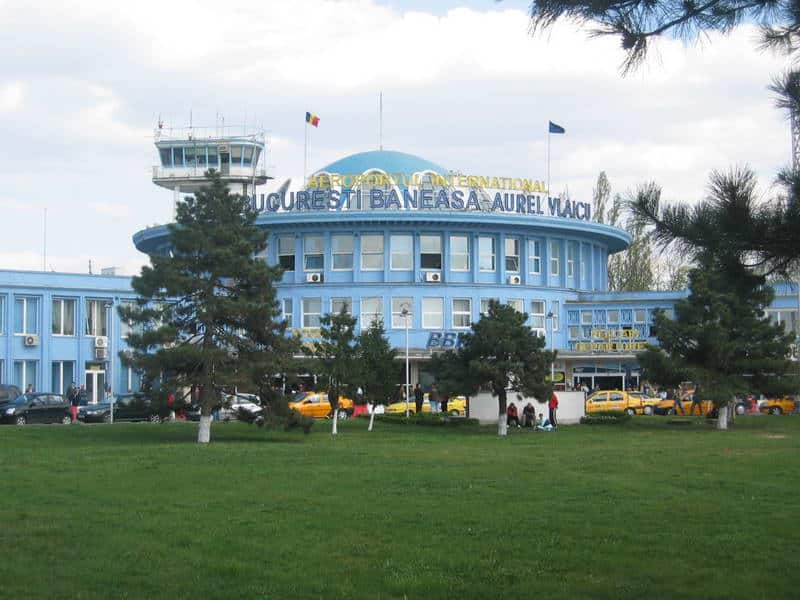
The BBU started as a private airfield for French pilot and aviation trailblazer Louis Blériot.
©Michael Katai / Public domain, from Wikimedia Commons, the free media repository – License
Whether you call this airport Aurel Vlaicu International Airport, Baneasa Airport, or Bucharest City Airport, it all adds to its prestige as the oldest continuously running airport in Eastern Europe.
The BBU started as a private airfield for French pilot and aviation trailblazer Louis Blériot. He took to the skies in 1909. However, it earned official recognition as an airport in 1912 when George Valentin Bibescu, another pioneer in the aviation industry, established one of Romania’s earliest flight schools on the Băneasa airfield.
The airport’s terminal building was built in 1952 in the design of the late 1940s. It still serves travelers today and continues to be identified as a landmark in the city.
Until the Henri Coandă International Airport (formerly Otopeni Airport) was opened to the general public in 1969, the Băneasa airport was the only airport in Bucharest. In March 2012, the BBU was converted into a business airport. This was ideal since there was no expansion plan, and the infrastructure couldn’t withstand heavy commercial traffic. As a result, all charter and LCC traffic moved to Bucharest Henri Coanda International Airport.
The airport is within the Băneasa district, about 9 kilometers (5.3 miles) north of central Bucharest. The eponymous airport was named to honor a Romanian pioneer pilot, inventor, airplane constructor, and engineer Aurel Vlaicu.
4. Bremen Airport, Germany

Bremen Airport is one of Germany’s major international commercial airports.
©Jürgen Howaldt, CC BY-SA 2.0 DE <https://creativecommons.org/licenses/by-sa/2.0/de/deed.en>, via Wikimedia Commons – License
Germany makes a second appearance on the list, with its Bremen Airport rated Europe’s fastest airport for departures. Passengers can go to the airport from the city center in about eleven minutes. It is 3.5 kilometers (2.2 miles) south of the city, and the tram stops directly in front of the terminal.
The BRE is one of Germany’s major international commercial airports. It serves around 30 nonstop destinations in countries across Europe and North Africa.
It became Bremen Airport Hans Koschnick in April 2017. A the time, the airport announced a name change after Hans Koschnick, a prominent German politician and former mayor of Bremen.
New terminal buildings and hangars were built in the 1930s, but the current largest was completed in 1937. Four additional runways were constructed in the same year.
The airport now consists of a single main passenger terminal building divided into Terminals 1, 2, 3, and E. Ryanair uses Terminal E, which has check-in counters 1E–4E and walk-boarding. The airport’s aviation and space exploration museum displays the first Spacelab module and the Junkers W33 Bremen.
In the 1910s, the Senate of Bremen backed the construction of an airfield to link Bremen to the expanding network of airship routes. The airport was officially approved on May 16th, 1913. It was taken for use during WWI and civilian operations halted until July 18, 1920.
5. Rome-Ciampino International Airport, Italy
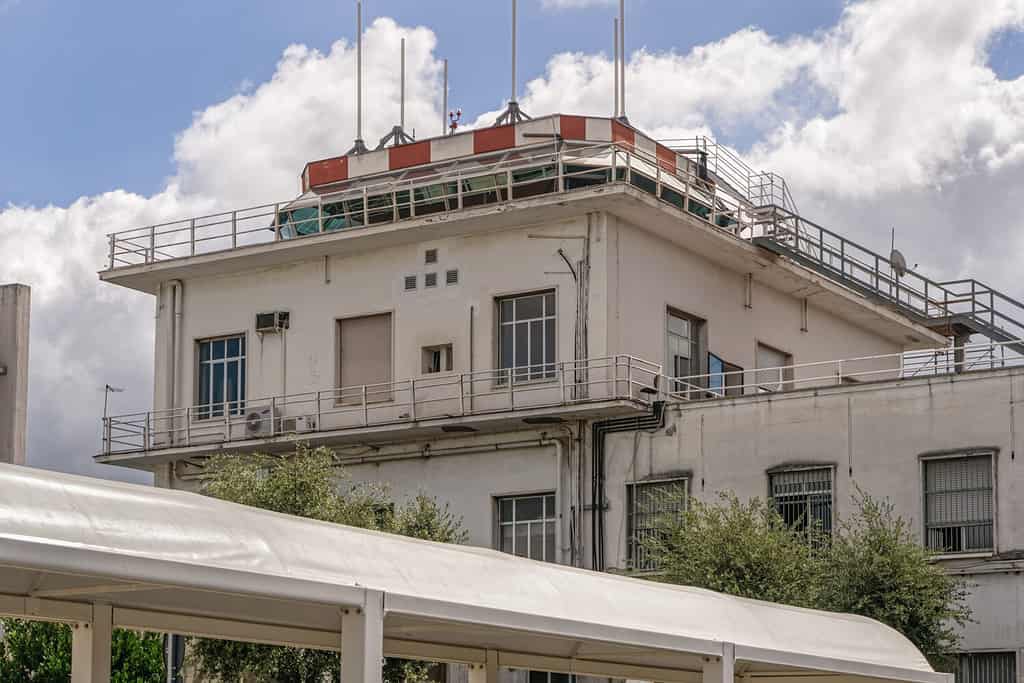
Located 12km (7.5 miles) southeast of central Rome, the airport is a major hub for general aviation traffic and several low-cost carriers.
©Bestravelvideo/Shutterstock.com
The Rome–Ciampino International Airport “G.B Pastine” (CIA) is the smaller of the two international airports in Rome and a mixed-use civilian, commercial, and military airport.
It houses the 31º Stormo, the 2nd Reparto Genio of the Italian Air Force, and a military airstrip. Unsurprisingly, the CIA honors Giovan Battista Pastine, an Italian airship pilot who was a WWI veteran. It was opened for operations in 1916.
Located 12km (7.5 miles) southeast of central Rome, the airport is a major hub for general aviation traffic and several low-cost carriers.
With a yearly passenger volume of more than 2 million, it was the main airport in Rome until 1960 when Leonardo da Vinci–Fiumicino Airport opened. After the opening of Fiumicino Airport, charter, and executive flights were almost entirely handled at Ciampino.
Low-cost airlines have helped Ciampino airport flourish after decades of stagnant scheduled traffic; it is currently the 10th busiest in Italy and one of the fastest-growing. The terminal facilities were expanded to handle the rising number of low-cost carrier operations.
6. Amsterdam Airport Schiphol, Netherlands

The Amsterdam Airport Schiphol (AMS) is the largest and busiest airport in the Netherlands.
©Steve Photography/Shutterstock.com
The Amsterdam Airport Schiphol (AMS) is the largest and busiest airport in the Netherlands, situated in the municipality of Haarlemmermeer in North Holland province, 9 kilometers (5.6 miles) southwest of Amsterdam.
KLM, KLM Cityhopper, KLM Cargo, Martinair all have hubs at Schiphol Airport. It’s also the focus city for Transavia, Easyjet, and TUI Airlines, also known as TUI fly Netherlands. In addition, AMS is one of Europe’s busiest airport transit hubs, serving more than 40 million travelers on business and vacation each year.
It was ranked the world’s third busiest airport by international passenger traffic in 2021 and voted the Best Airport in Western Europe in 2020 at the Skytrax World Airport Awards.
The airport debuted as a military airbase in September 1916, but civilians had access to it at the end of World War I. Ultimately, it stopped serving as a military base. However, with six runways and a single terminal building divided into three departure halls, AMS has since established itself as one of the largest airports in the world.
7. Paris-Le Bourget Airport, France

LBG is well-known for being the landing point of Charles Lindbergh’s solo transatlantic flight in the Spirit of St. Louis in 1927.
©schusterbauer.com/Shutterstock.com
It’s safe to say “Bienvenue” to the French capital, Paris. Paris-Le Bourget Airport (LBG) became operational in 1919 and was the only airport in Paris before Orly Airport was built in 1932.
LBG is well-known for being the landing point of Charles Lindbergh’s solo transatlantic flight in the Spirit of St. Louis in 1927. It focused mainly on business aviation in 1981 to compete with the rapid expansion of the Paris-Orly and Paris-Roissy Charles de Gaulle Airports. As a result, it is now one of the top business airports in Europe.
The airport is only 7km (4.3 miles) from the capital city and enjoys great transportation networks to the city center.
Paris-Le Bourget Airport spans 553 hectares and has 3 runaways; thus, any aircraft can land at the airport. It has played host to the biennial Paris Air Show since 1953.
The Air & Space Museum (Musée de l’Air et de l’Espace) is another attraction at the airport. The museum features flying simulators, a planetarium, exhibitions, and other special events.
8. Sydney Kingsford Smith International Airport
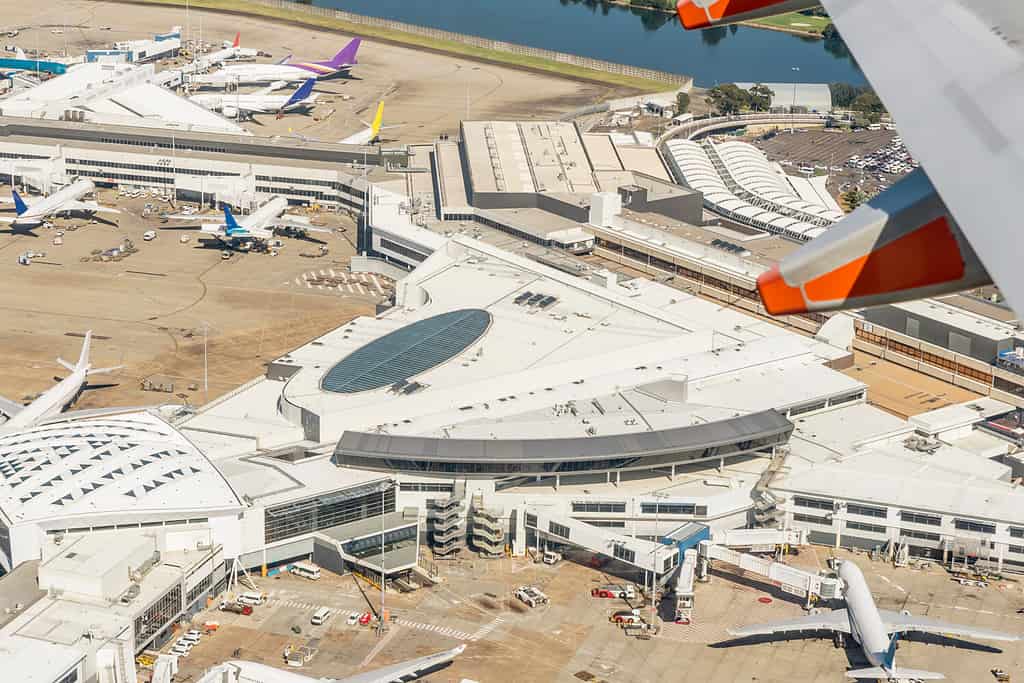
Daily flights connect Sydney with popular destinations worldwide on over 35 carriers’ inbound and outbound routes through Sydney Airport.
©Marco Taliani de Marchio/Shutterstock.com
The northern shores of Botany Bay are home to Australia’s busiest airport, Sydney Kingsford Smith International Airport. It was formally inaugurated as Mascot Aerodrome in 1920. This explains why most Sydney residents called the airport Mascot until the early 1960s.
By the middle of the 1920s, the Australian Government had acquired the aerodrome, and frequent air services were being run between Sydney, Melbourne, and Adelaide.
Today, it’s the main gateway to Australia. Daily flights connect Sydney with popular destinations worldwide on over 35 carriers’ inbound and outbound routes through Sydney Airport. The airport is about 10 kilometers from the city center with easy train, bus, or vehicle access.
SYD is a focus city for Air New Zealand and a hub for Qantas and Virgin Australia. It was renamed Sydney (Kingsford Smith) Airport in August 1936 to recognize the renowned Australian pilot Sir Charles Kingsford Smith.
9. Minneapolis–Saint Paul International Airport, U.S.

MSP is the largest and busiest airport in the upper Midwest region and a hub for Delta Air Lines, Bemidji Airlines, and Sun Country Airlines.
©Minnesota Historical Society, CC BY-SA 2.0, via Wikimedia Commons – License
The Minneapolis-Saint Paul International Airport (MSP) is a joint-use, civil, and military public airport nestled within Fort Snelling Unorganized Territory, Minnesota, United States. Minneapolis, St. Paul, and the suburbs of Richfield, Bloomington, Mendota Heights, and Eagan all encircle the airport.
Downtown Minneapolis and downtown Saint Paul are both within 16 kilometers (10 miles) of its central location.
MSP is the largest and busiest airport in the upper Midwest region and a hub for Delta Air Lines, Bemidji Airlines, and Sun Country Airlines. The airport contains an airfield with four runways, two terminal buildings (Terminals 1 and 2), and nearby parking ramp services.
The light rail transport service is in use by travelers who have to change terminals; the distance between the buildings is inaccessible on foot.
The airport was founded in 1919 when some local organizations collaborated to gain possession of the defunct Twin City Speedway race track. In June 1928, the Minneapolis Park Board seized ownership of Speedway Field, and passenger operations started the following year.
Ernest Groves Wold and Cyrus Foss Chamberlain, two WWI veteran pilots, inspired the airport’s name change to “Wold-Chamberlain Field” in 1923. It became Minneapolis–St. Paul Metropolitan Airport/Wold-Chamberlain Field in 1944 and Minneapolis–St. Paul International Airport/Wold-Chamberlain Field in 1948.
10. Albany International Airport, U.S.
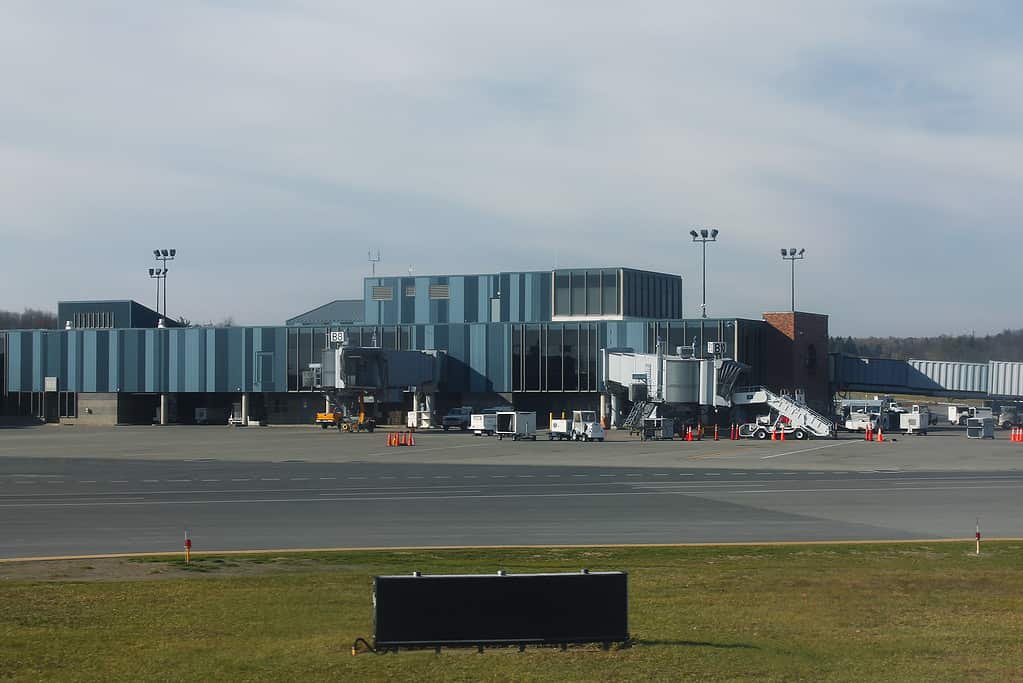
The airport’s first airmail flights took off in June 1928, and passenger flights followed four months later in October.
©formulaone / CC BY-SA 2.0 – License
The 1,200-acre Albany International Airport (ALB) is the first and oldest municipal airport in the United States. Located 9.7 kilometers (6 miles) northwest of Albany in New York at Interstates 90 and 87, it’s the fourth-largest in New York State.
It’s the main gateway to Northeastern New York, Western New England, Southern Vermont, and the Capital Region. The airport’s first airmail flights took off in June 1928, and passenger flights followed four months later in October.
Summary Of The 10 Oldest Airports In The World
| Rank | Airport | Location | Year |
|---|---|---|---|
| 1 | College Park Airport | College Park, Maryland | 1909 |
| 2 | Hamburg Airport, Germany | Hamburg, Germany | 1911 |
| 3 | Bucharest Băneasa- Aurel Vlaicu International Airport | Bucharest, Romania | 1912 |
| 4 | Bremen Airport | Bremen, Germany | 1910-1920 |
| 5 | Rome-Ciampino International Airport, Italy | Ciampino, Province of Rome, Italy | 1916 |
| 6 | Amsterdam Airport Schiphol, Netherlands | Schiphol, Amsterdam, Netherlands | 1916 |
| 7 | Paris-Le Bourget Airport | Le Bourget, France | 1919 |
| 8 | Sydney Kingsford Smith International Airport | Sydney, Australia | 1920 |
| 9 | Minneapolis–Saint Paul International Airport | St Paul, Minnesota | 1919 |
| 10 | Albany International Airport | Albany, New York | 1928 |
The photo featured at the top of this post is © Harris & Ewing, photographer, Public domain, via Wikimedia Commons – License / Original
Thank you for reading! Have some feedback for us? Contact the AZ Animals editorial team.







